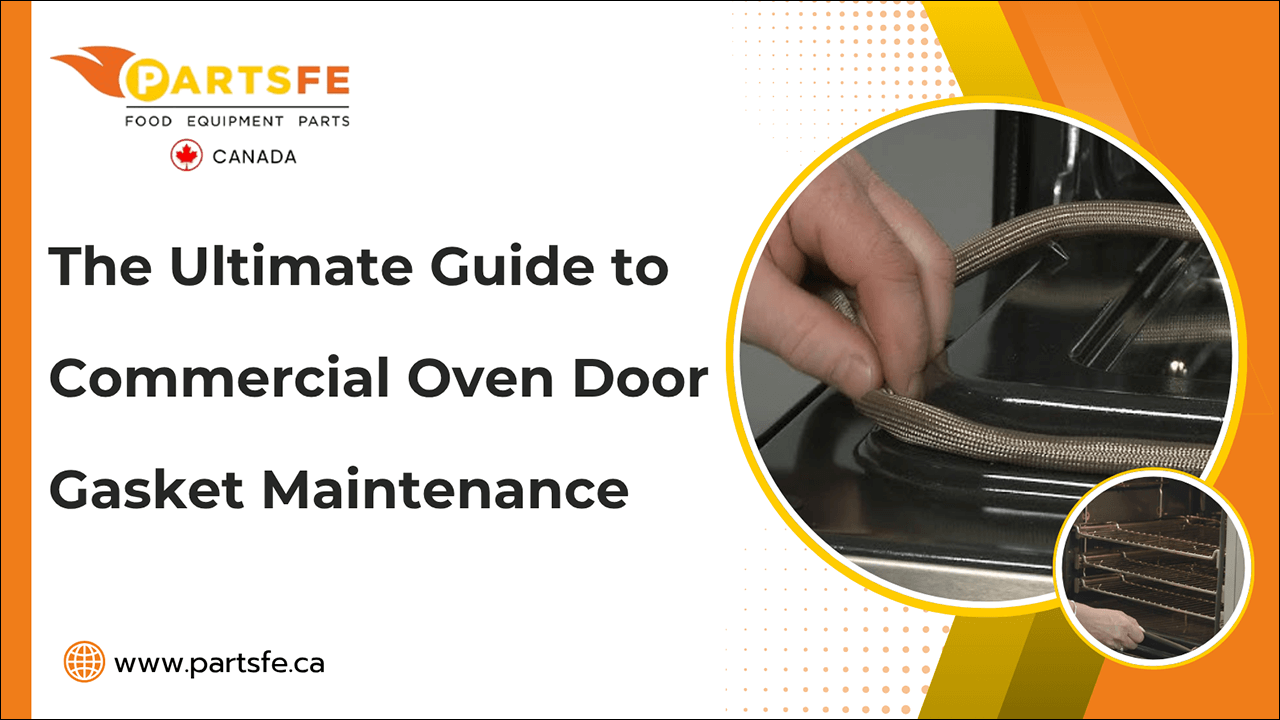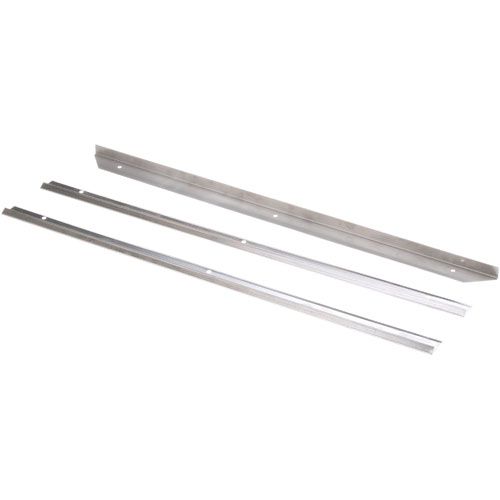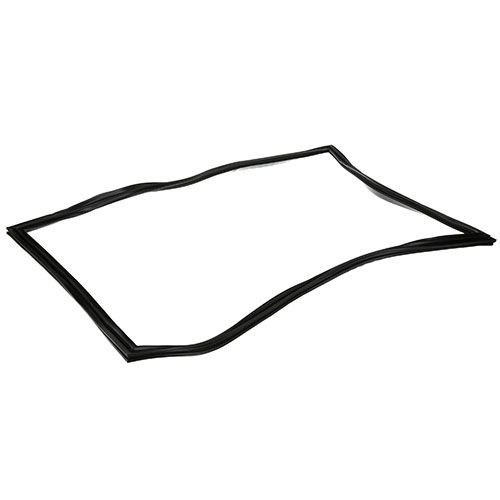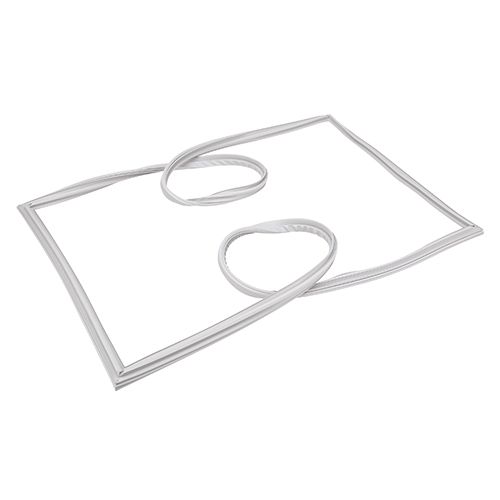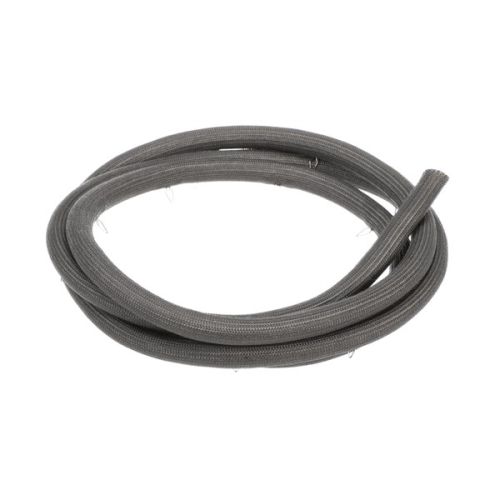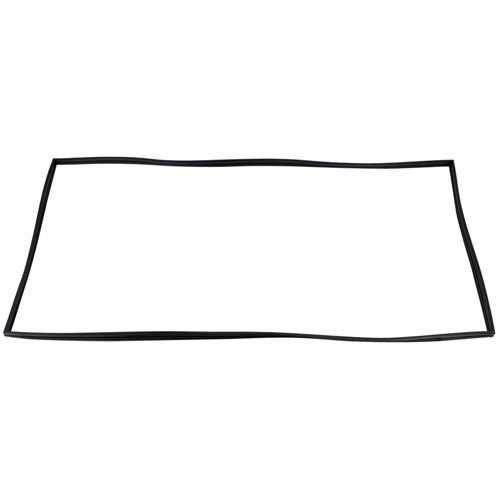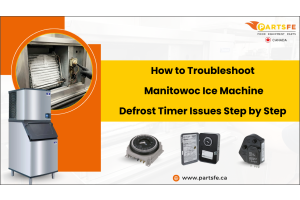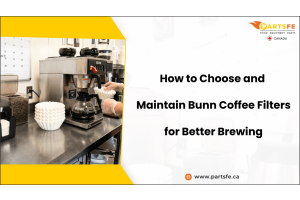The Ultimate Guide to Commercial Oven Door Gasket Maintenance
Maintaining the door gasket on your commercial oven is essential to ensure optimal performance, energy efficiency, and food safety. The gasket, a rubber or silicone seal surrounding the oven door, is essential for maintaining a stable internal temperature and preventing heat from escaping. However, with regular use, exposure to high heat, and frequent cleaning, it can gradually wear down and lose its effectiveness. When compromised, a gasket can cause uneven cooking, increased energy consumption, and even pose health risks due to inconsistent cooking temperatures. In this ultimate guide, we’ll walk you through the importance of regular gasket maintenance, signs of damage, how to properly clean and inspect your oven door gasket, and when it’s time for a replacement. Keep your oven performing at its best and your kitchen operating efficiently!
Why Your Commercial Oven Door Gasket Matters
The commercial oven door gasket is often overlooked, but it plays a crucial role in ensuring optimal performance. Here’s why it matters:
-
Maintains Consistent Temperature: A properly sealed gasket prevents heat from escaping, ensuring your oven maintains the desired cooking temperature. This consistency is key to quality food preparation.
-
Improves Energy Efficiency: An intact gasket reduces the amount of energy needed to maintain temperature, helping your business save on energy costs over time.
-
Prevents Contamination: A damaged gasket can allow contaminants like dirt, grease, and moisture to enter the oven, compromising food safety and hygiene.
-
Prevents Moisture Loss: A sealed gasket helps retain moisture inside the oven, keeping foods like baked goods and roasts from drying out.
-
Prevents Overheating: A leaky gasket can cause overheating, potentially damaging the oven and leading to safety hazards in the kitchen.
In short, a well-maintained gasket is essential for safe, efficient, and high-quality cooking in your commercial oven. Regular checks can make all the difference!
Is your commercial oven door not sealing properly? PartsFeCA offers high-quality parts like door hinges, silicone sealants, and gasket mounting kits from leading brands like Hobart, Delfield, and Imperial. You need to restore performance and prevent energy loss.
Types of Commercial Oven Door Gaskets
Commercial oven door gaskets come in several types, each tailored to specific oven models and cooking conditions. Selecting the right gasket enhances performance, efficiency, and food safety.
-
Rubber Gaskets: Durable and chemical-resistant, ideal for conventional ovens and ranges.
-
Silicone Gaskets: Highly flexible and heat-resistant, suitable for high-temperature ovens like pizza or convection models.
-
Fiberglass Gaskets: Excellent for extreme heat insulation in industrial ovens, often coated for added durability.
-
Teflon Gaskets: Non-stick and heat-resistant, great for food processing ovens needing easy cleaning.
-
Magnetic Gaskets: Provide a strong seal with magnetic strips, best for frequently used or large oven doors.
-
Foam Gaskets: Made from high-temp foam, these gaskets offer a soft, compressible seal for light-duty oven doors.
-
Rope Gaskets: Typically crafted from fiberglass or ceramic, rope gaskets are ideal for industrial ovens and furnaces handling extreme heat.
-
Double-Lip Gaskets: Designed with two sealing edges, these gaskets provide enhanced insulation and energy efficiency.
-
Silicone Sponge Gaskets: A softer form of silicone gasket, perfect for applications requiring a cushioned, airtight seal.
Choosing the correct door gasket type based on your oven's requirements will help ensure long-lasting performance and reduce the risk of costly repairs.
How to Inspect Your Commercial Oven Door Gasket
To keep your commercial oven running smoothly, regularly inspecting the door gasket is crucial. Here's a step-by-step approach to help you spot any issues:
Visual Check: Look for Cracks and Damage
-
Examine the gasket for any visible damage, such as cracks, tears, or warping.
-
Pay close attention to any areas where the gasket may be missing pieces or show signs of brittleness or discoloration.
Seal Inspection: Check for Gaps
-
Check for any gaps around the gasket after closing the oven door.
-
The entire door edge should be sealed tightly and uniformly by the gasket. Gaps suggest the gasket is not performing properly.
Pressure Test: Assess the Gasket Pressure
-
Gently feel along the gasket edges with your fingers while the oven door is shut.
-
Feel for any loose spots or areas with inconsistent pressure. If the door doesn’t shut tightly, the gasket may need replacing.
Paper Test: Test the Seal Effectiveness
-
Close the oven door after inserting a piece of paper between the gasket and the door.
-
If the paper can be pulled out too easily, this indicates the gasket isn’t sealing properly and should be replaced.
Heat Damage Check: Look for Burn Marks
-
Inspect the area around the gasket for signs of heat damage, discoloration, or burning.
-
If the gasket shows excessive wear due to heat, it may no longer insulate effectively and needs to be replaced.
By following these steps, you’ll ensure your oven door gasket stays in top condition, preventing issues and extending the life of your oven.
Check out our detailed guide on how to fix a broken heating element in a commercial oven to keep your equipment running smoothly and avoid costly downtime.
Oven Door Gasket Cleaning and Maintenance Tips
Regular cleaning and maintenance are key to keeping your oven door gasket functioning properly. If you're unsure how to clean oven door gasket, here are practical tips to help maintain it in peak condition:
Clean Regularly
Use a soft cloth and warm, soapy water to gently wipe away grease, food residue, and dirt from the gasket.
-
Pro Tip: Use a toothbrush for corners or hard-to-reach areas to get rid of stubborn grease buildup without damaging the gasket.
Use Mild Detergents
Stick to mild dish soap or a mixture of vinegar and water to clean the gasket. Avoid using harsh chemicals, as they can cause the material to degrade over time.
-
Pro Tip: Before applying any cleaner to the entire gasket, test it on a small, hidden area to prevent possible damage.
Dry Properly
After cleaning, thoroughly dry the gasket with a soft cloth. Excess moisture can promote mold growth and compromise the strength of the gasket.
-
Pro Tip: Leave the oven door open for a few hours after cleaning to ensure the gasket dries completely, especially in high-humidity environments.
Inspect for Damage
Examine the gasket frequently for tears, cracks, or hardened spots. To prevent contamination or heat loss, replace the gasket as away if you find any damage.
-
Pro Tip: Run your fingers along the gasket after each cleaning. This can help you feel for any small wear spots that might not be visible yet.
Prevent Heavy Buildup
Avoid allowing food or grease to build up around the gasket. Clean up spills immediately to maintain an effective seal.
-
Pro Tip: Use a silicone-based oven cleaner around the door edges to prevent stubborn grease from sticking to the gasket.
Keep It Lubricated
Apply a small amount of food-grade silicone spray or lubricant to the gasket to help it stay flexible and resilient.
-
Pro Tip: Lubricate the gasket once a month, especially if you're operating in high-heat conditions like pizza ovens or commercial bakeries.
By following real maintenance tips for cleaning oven door gasket, you’ll keep it in top condition.
When to Replace Your Oven Door Gasket
The oven door gasket is crucial for maintaining the temperature and energy efficiency of your oven. Here’s when you should replace it:
-
Slow Preheat: A worn gasket can cause heat to escape, making the oven take longer to reach the desired temperature.
-
Heat Escaping: If heat escapes during cooking, it often signals that the gasket is no longer sealing properly.
-
Moisture Buildup: Moisture, grease, or food around the oven door suggests the gasket isn’t sealing tightly.
-
Hardened Gasket: A gasket that feels stiff or cracked can’t form a proper seal and should be replaced.
-
Door Not Closing: If the oven door doesn’t shut completely or leaves a gap, the gasket is likely worn or compressed.
Knowing how to replace oven door gasket at the right time will help maintain cooking efficiency, reduce energy costs, and ensure better food quality.
Check out this guide on how to replace your oven thermostat to ensure accurate temperature control and efficient oven performance.
Common Oven Door Gasket Problems and How to Prevent Them
Oven door gaskets are vital for sealing in heat, but they can wear down over time due to regular use, heat, and grime. Identifying issues early helps avoid costly repairs.
Cracking or Splitting
Constant exposure to high heat can dry out the gasket, causing it to crack or split.
-
Prevention: Clean the gasket weekly using a mild soap and water solution, and avoid harsh chemical cleaners that can degrade the material.
Gasket Pulling Away from the Frame
Over time, the gasket may loosen or detach from the door frame, reducing the oven’s ability to seal properly.
-
Prevention: Gently inspect the gasket during regular cleaning. Press it back into place if loose, and avoid tugging or over-stretching when cleaning.
Grease and Food Build-Up
Grease and food particles can collect on the gasket, hardening and reducing its flexibility.
-
Prevention: Wipe down the gasket after each use before spills dry, and deep clean it weekly using a non-abrasive sponge.
Loss of Flexibility
Age and repeated heating cycles can make the gasket stiff, preventing it from forming a tight seal.
-
Prevention: Apply a food-safe silicone lubricant occasionally to maintain softness, and replace the gasket every 1–2 years as part of preventive maintenance.
Improper Door Alignment
A misaligned oven door can crush or wear down the gasket unevenly.
-
Prevention: Ensure the door hinges are tight and aligned. If the door feels loose or uneven, have it checked by a technician before it damages the gasket.
The ROI of Regular Oven Door Gasket Maintenance
Regular oven door gasket maintenance may seem small, but it delivers big returns in energy efficiency, equipment durability, and cooking consistency.
-
Reduced Energy Costs: A tight seal reduces heat loss, helping ovens use less energy and lowering utility bills.
-
Extended Equipment Life: Less strain on heating elements and components means fewer breakdowns and a longer oven lifespan.
-
Consistent Food Quality: Maintaining proper heat levels ensures food is cooked evenly, improving quality and reducing waste.
-
Lower Repair Costs: Replacing a worn gasket is cheaper than fixing internal oven damage caused by prolonged heat loss.
-
Improved Safety and Compliance: A clean, intact gasket prevents grease buildup and contamination, supporting food safety and fire prevention standards.
Small, consistent maintenance of your oven gasket can lead to major savings and reliable performance over time.
Conclusion
Proper care of your commercial oven door gasket isn’t just about keeping things clean, it’s about protecting your investment. Understanding what an oven door gasket is and its role in sealing heat is essential for preventing energy waste and avoiding costly breakdowns. From ensuring food cooks safely and evenly to maintaining professional standards, regular gasket maintenance plays a vital role in overall kitchen performance. By recognizing common problems, knowing when to replace the gasket, and following consistent cleaning practices, you extend the life of your equipment. Ultimately, a small effort in maintenance yields long-term reliability, efficiency, and peace of mind in any commercial kitchen.
FAQs
How do I know if my oven door seal is bad?
If you notice heat escaping, uneven cooking, or a loose, cracked gasket, your seal may be damaged. You might also feel warm air leaking around the door during operation.
Why is my oven door not sealing properly?
A misaligned door, a worn-out gasket, or food debris on the seal can prevent proper closure. Regular cleaning and gasket inspection can help identify the issue.
How to fix oven door gasket?
Turn off the oven, remove the old gasket, and replace it with a compatible new one, following the manufacturer's instructions. Make sure the new gasket is securely fitted and forms a tight seal.
Can you still use the oven if the door seal is broken?
You can, but it's not recommended as heat will escape, causing energy waste and uneven cooking. A broken seal can also lead to overheating of nearby components.

